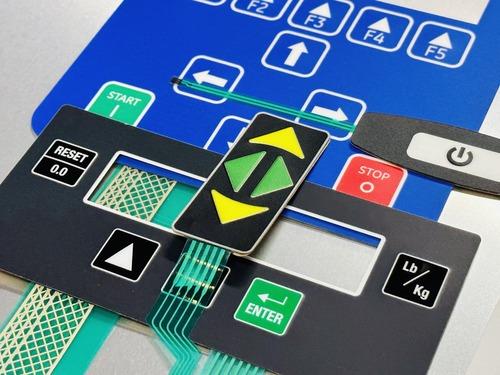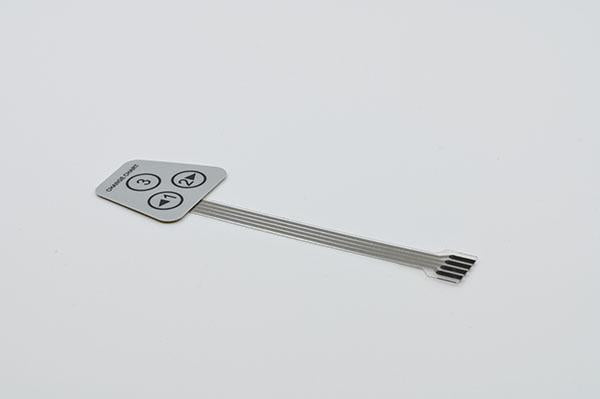How Membrane Switches Are Designed for Easy Maintenance and Repair
How Membrane Switches Are Designed for Easy Maintenance and Repair
Blog Article
Understanding the Significance of Membrane Switches in Interface
Membrane buttons are essential components in the layout of reliable individual interfaces, helping with not just performance but also boosting visual charm and user interaction. Their distinct attributes, such as resistance to environmental factors and customizable layouts, make them suitable for a diverse variety of applications throughout numerous markets. As we explore the future trends and numerous benefits related to Membrane innovation, it becomes clear that these buttons are a lot more than simply components; they stand for a merging of advancement and usefulness. The effects of this innovation on customer experience deserve analyzing even more.
What Are Membrane Switches?

The spacer layer, which contains adhesive residential properties, enables for the separation of the circuit layer from the overlay, guaranteeing that the switch remains in a non-activated state up until pressed. When stress is used to the overlay, it presses the spacer layer, connecting the void and completing the circuit in the underlying layer. This design not only lowers the physical space required for typical mechanical buttons but additionally boosts the toughness of the device, as Membrane buttons are generally resistant to dirt, dampness, and other environmental elements.
Frequently located in applications ranging from consumer electronics to clinical devices, Membrane buttons are important to contemporary innovation, giving a easy to use and effective user interface that aligns with modern design needs.
Benefits of Membrane Buttons
While various switch modern technologies exist, Membrane Switches deal distinctive benefits that make them particularly preferable in different applications. Among the main benefits of Membrane switches is their compact design, which permits space-saving executions in tools where actual estate is limited. Their thin profile not only enhances aesthetic appeal yet additionally helps with lightweight building and construction.
An additional significant advantage is their resistance to ecological variables. Membrane buttons are generally sealed versus moisture, dirt, and pollutants, making them optimal for usage popular atmospheres, such as medical gadgets and commercial devices. This sturdiness prolongs the life expectancy of the button, reducing upkeep costs and improving dependability.
Additionally, Membrane switches can be customized to fulfill details style needs, including distinct graphics and shades that boost customer interaction. Their tactile feedback options can also be tailored to offer a gratifying individual experience. In addition, Membrane buttons are cost-effective, especially in high-volume applications, as they can be created successfully.
Applications in Different Industries

In the customer electronic devices industry, Membrane buttons prevail in devices such as microwaves, washing machines, and push-button controls. Their tactile feedback and aesthetic choices improve individual experience while offering a sleek, contemporary look. Additionally, vehicle suppliers utilize Membrane switches in dashboard controls and infomercial systems, where space is limited, and customer involvement is important.
In addition, the industrial market leverages Membrane switches in control panels for machinery and equipment, enabling for intuitive procedure in commonly severe settings. Their resistance to chemicals and moisture ensures longevity and dependability in these applications. Overall, the flexibility of Membrane Switches adds substantially to their widespread usage, making them important in numerous technological domain names.
Style Factors To Consider for Membrane Buttons

When designing Membrane switches, a number of key considerations have to be thought about to ensure ideal performance and customer experience. The choice of materials is essential; picking long lasting, top quality substrates can improve the website link button's long life and resistance to environmental aspects such as wetness and temperature fluctuations.
Secondly, the layout of the graphic overlay ought to focus on clearness and ease of use. Symbols and message must be readable, and the design needs to assist in intuitive interaction (membrane switches). Additionally, tactile comments is necessary; incorporating a tactile dome or other devices can improve the user experience by giving physical verification of activation
Another crucial variable is the button's electric efficiency. Designers need to make sure that the conductive traces are effectively designed to minimize resistance and prevent signal interference. This entails examining the needed actuation pressure and ensuring compatibility with the electronic parts they will interface my sources with.

Future Patterns in Membrane Technology
As modern technology proceeds to advancement, Membrane buttons are positioned to progress significantly, driven by advancements in products and manufacturing strategies. One arising pattern is the incorporation of advanced materials, such as conductive inks and versatile substratums, which enhance toughness and lower the total weight of Membrane switches. These materials not only enhance the responsive action yet additionally enable the style of buttons that can endure harsher ecological conditions.
Moreover, the combination of touch-sensitive modern technologies is changing conventional Membrane Switches right into more interactive interface. Capacitive touch sensors embedded within Membrane button panels can give a more user-friendly and responsive customer experience, straightening with the expanding need for streamlined, modern layouts in customer electronics.
Additionally, innovations in printing methods, such as digital and 3D printing, enable quick prototyping and customization of Membrane buttons. This adaptability allows manufacturers to respond quicker to market demands and customer choices.
Lastly, sustainability is ending up being a substantial focus, with producers discovering environment-friendly materials and my link procedures. As these trends unravel, the future of Membrane technology guarantees improved functionality, aesthetic allure, and environmental responsibility, strengthening their duty in sophisticated user interfaces throughout different industries.
Conclusion
In conclusion, Membrane Switches represent a crucial element in the layout of customer interfaces, combining performance with aesthetic versatility. As improvements in technology continue, the evolution of Membrane buttons is anticipated to more refine individual interfaces, driving technology and improving use in a progressively complicated technical landscape.
Membrane switches are important elements in the style of effective customer interfaces, facilitating not just functionality however additionally enhancing visual appeal and individual interaction.Membrane Switches serve as a vital component in different customer interfaces, helping with a seamless interaction in between customers and digital tools.While various switch modern technologies exist, Membrane Switches offer unique benefits that make them specifically desirable in various applications.In addition, Membrane switches can be personalized to fulfill specific design requirements, including unique graphics and colors that improve customer interaction.In final thought, Membrane Switches stand for a crucial component in the design of individual interfaces, integrating performance with aesthetic flexibility.
Report this page